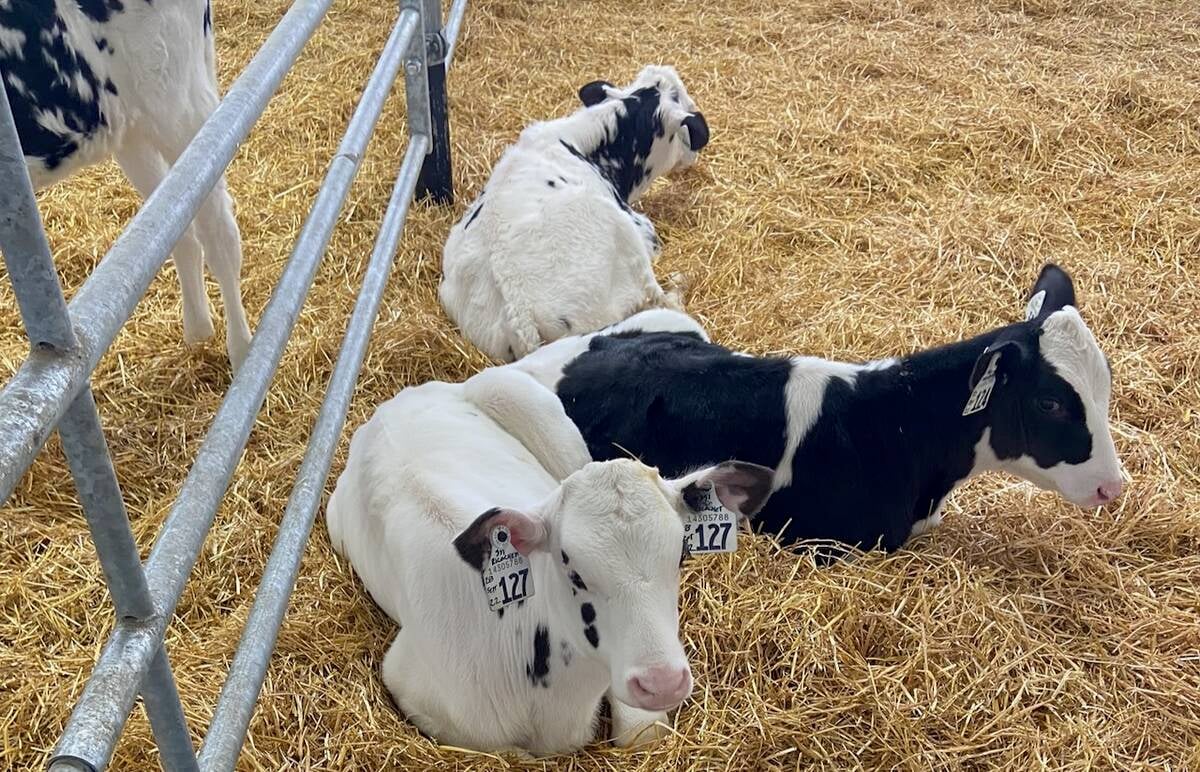The livestock sector could significantly reduce and in some cases, eliminate, antimicrobial use with simple changes in management practices, say veterinarians.
And that would reduce the threat of antimicrobial resistance and boost consumer confidence in the cattle industry.
“The key is to have animals that are properly vaccinated,” said Craig Dorin of Veterinary Agri-Health Services.
Dorin — and his call “to change our management system” — is featured in a new video from the Beef Cattle Research Council.
Specifically, the Airdrie vet recommends low-stress weaning and pre-weaning vaccination so young cattle can build up their immune systems long before being transported to feedlots and mixing with other animals.
Read Also

Best tactics for dairy calf diarrhea
Scours in young livestock costs Canadian farmers big bucks. Fluids, managed antibiotics and anti-inflammatories help animals recover faster.
But that’s not happening often enough and producers commonly tailor vaccine programs to their own needs, without thinking of what is best for the animals or the person who will own the cattle next.
“The industry hasn’t been very good at paying people for these value adds, and there hasn’t been a lot of incentive for people to do that,” said Dorin.
Indeed, the situation of a feedlot operator also featured in the research council video — Bryan Thiessen of Namaka Farms — illustrates the problem.
Thiessen kicks off the eight-minute video by explaining that antimicrobials are used judiciously at his family’s Strathmore feedlot and only when cattle become sick.
No choice
But in an interview, Thiessen said that while he doesn’t vaccinate cattle from his herd when they enter the feedlot, he has no choice but to vaccinate animals coming from elsewhere.
“Being that we’re buying through an auction mart system, there really is no way of proving what people did in the past or not,” he said. “There is no way for us to know what the animals have had in the past, unless you are buying straight off a farm or have a relationship with the cow-calf producer.”
But cattle will have a much stronger immune system — and therefore be much less likely to fall ill — if low-stress weaning and early vaccination are employed, Dorin states in the video.
“If we’re going to talk about the development of resistance in the antimicrobials we use, we need to change our management system,” he says.
He then explains vaccinations are more effective when calves aren’t under stress.
“One of the management practices we’ve had some big success with is pre-weaning vaccinations,” Dorin says in the video, explaining how calves are vaccinated two weeks before weaning and then placed back with their mothers.
“In that two-week period, they’re not under any stress at all and their immune system has ample opportunity to develop a response to the vaccine and that provides protection against these diseases. Then when they’re taken to a feedlot or transported or taken to an auction mart, they already have the immune system protection in their bodies and they’re much less likely to get sick.
“Then we can significantly reduce the amount of antimicrobials we use at the feedlots and change whether we use them at all if these animals come to the feedlot with their vaccines and their immune systems in place.”
Namaka Farms’ vaccination program for its own cattle gives them the robust immunity that Dorin describes, said Thiessen.
“Having a proper vaccination program on farm is huge,” he said. “It helps the calves be a lot stronger.”
Info sharing
Vaccination information doesn’t normally travel with cattle, said Kent Fenton, a veterinarian and partner in Feedlot Health Management Services of Okotoks.
Having an easy-to-use system to share this information would be a big step forward, he said.
“Knowing the history could enhance what feedlots are able to do,” said Fenton.
Some pharmaceutical companies have branded vaccine programs, which allow participating producers to sell their animals as vaccine verified. However, these programs are not independently audited.
It’s possible vaccination data could eventually be tracked in a program such as BIXS (Beef InfoXchange System), which is currently being revamped for McDonald’s verified sustainable beef initiative.
But this type of system has to prove its worth, Fenton said.
“If you can show value from the data and make it easier to enter, analyze and show value from that, I think there will be greater uptake,” he said. “If there’s more information up and down the different sectors and more information transferred from the animals, we’ll all be able to do our jobs better. We’re able to manage those animals better because we have an understanding of what has been done to them.”
However, reducing antimicrobial use comes with a cost, said Dorin.
“At the end of the day, food retailers and consumers need to step up and say, ‘We know it costs more money to produce animals that are raised in an environment with little to no antimicrobial use. We’ll pay you to do that,’” he said.
But that economic signal hasn’t been sent yet, he added.
“I don’t think that there is a strong message to producers that people are prepared to do that,” Dorin said.
In the meantime, cow-calf producers can still take action on their own to reduce the need for antimicrobials — and the threat of antimicrobial resistance, he said. In addition to pre-weaning vaccinations and low-stress weaning, producers should be talking to their vets to learn more about the appropriate use of antimicrobials, he said.
And even though calves are fetching record prices, producers “still need to be prudent” in choosing what antimicrobials to use and whether they’re even needed.
“There are lots of times that animals have a disease that is not infectious in nature that doesn’t respond to antimicrobials,” he said.
















